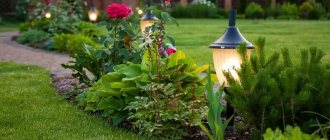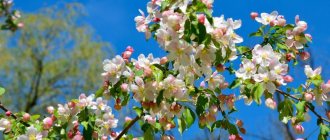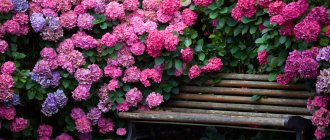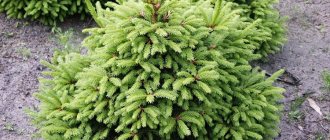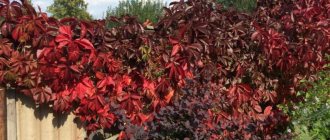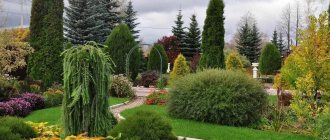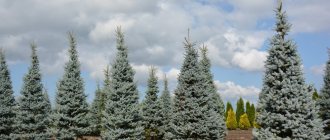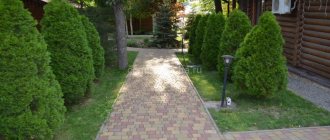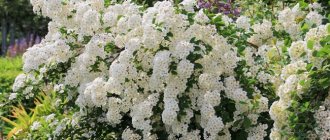Eco-garden (or as it is also called Natur Garden) means that the natural style in landscape design will be formed in a natural, natural outline. It is often also called forest or eco style. This is the so-called picturesque chaos, created by nature, but ordered by man. Naturally themed gardens take inspiration from woodlands, meadows, forests or deserts through their planting style and color palette. Depending on your climate, your untamed garden may feel like a shady forest hideaway with plenty of ferns, shrubs and woodland flowers.
Main features of the style
The style in question was described by the theorist and architect of antiquity - Vetruvius. The design was called “Nature Garden”.
Did you know? One of the 10 most unusual landscapes in the world created by nature is the “Chocolate Hills” in the Philippines. On the territory of the island. Bohol is home to 1,770 identically shaped hills that are similar in color to the confectionery they are named after.
Before you start designing a site, it is worth familiarizing yourself in more detail with the main features characteristic of eco-style:
- maximum naturalness;
- all natural fragments and relief are not modernized, but preserved;
- there must be bodies of water containing fish;
- zoning of the territory is carried out using natural materials (boards or tree trunks, hedges);
- the lines of transitions between objects are smooth, not interrupted;
- Only natural materials with minimal processing are used for decoration;
- There can be any number of zones, they all have a clear purpose, but are inextricably linked.
Based on information about the characteristic features of eco-design, we can conclude that a feature of the theme is the maximum preservation of what has already been laid down by nature itself.
Ecostyle color scheme
For no style of landscape design is color as important as for “eco”. Only colors from the natural palette of the area are acceptable. Any bright color that is not typical of natural nature will be a dissonance, a foreign inclusion. This rule also applies to the house, but eco-style is widely reflected in modern architecture, so choosing a suitable project will not be difficult.
The facade must be made of natural wood or stone. Also, one of the techniques that is used when bringing a house or fence into the general style is vertical gardening. With its help you can hide a fence made of corrugated sheets or a wall of a house covered with plastic siding.
Zoning rules
To bring the idea to life, you need to clearly understand how many zones there will be on the territory and what practical significance each of them will have.
We recommend you learn how to beautifully plant tulips and daffodils on your site.
At any site, regardless of style, the following functional departments should be represented:
- the front door - it is visible to everyone who has just entered the territory;
- for relaxation - a place where attributes for relaxation and meeting guests will be located;
- gardening - a zone without which it will not be possible to realize the idea of floral design;
- household - includes buildings for various needs (utility rooms, garages, baths, saunas, etc.);
- play area - a safe, equipped area for children to spend time.
The basic rule for separating functional parts in an eco-style area is the smoothness of transitions. Areas should not be isolated. They smoothly flow into one another. Convenience and simplicity are the key factors that should guide your design.
Selection of plants on the site
To create a landscape style, unpretentious plants are most often used. Flowers include mallow, irises, and pansies. Also widely used directly near buildings and not far from them in flower beds are crocuses and tulips, and delphinium.
Unpretentious plants are used in landscape style Source pinterest.com
Design colors
Everything is simple with the color palette. Eco-style involves the use of natural details created by nature itself.
Important! When placing plant elements, beginners can use a special design circle, which reflects the optimal color combinations and transitions. This will help make the picture as harmonious as possible and maintain the style.
The color palette of such a garden can be represented by the following colors:
- gray;
- white;
- all shades of green and brown;
- yellow;
- red;
- blue and light blue;
- purple.
The basis should be green tones. White is more often used as a background color and in dark corners. Yellow, red, blue, cyan and violet are used as complementary colors to contrast with the greenery. Brown and gray will be present in floral details, as well as decorative elements.
Natural style – naturgarden – natural garden
A garden made in a natural style (Naturstil) or “naturgarden” or “Natural garden” is a garden in which naturalness reigns. The natural style is extremely popular in Europe and England, but is not yet very widespread in Russia.
Natural style is simply ideal for a small area, where functional areas must be presented in the most complete set and there is no way to visually isolate them from each other. However, it is no less good for large areas, because historically many Russian estates were developed precisely according to this principle: a garden with linden alleys, centuries-old oaks, impenetrable thickets of rose hips and jasmine served as a natural continuation of the surrounding landscape.
A natural garden makes it possible to significantly save money on landscaping. At the same time, the artistic concept does not suffer in any way. The natural style allows for a flexible approach to solving any problems that arise during construction.
Lawns
Regarding the lawn, the naturgard style does not imply its clear presence. If there is already vegetation in the form of grass, then it is carefully mowed annually and more seeds are sown. Under no circumstances should the area be specially leveled. If there is no or little grass vegetation, then you can sow clover and wildflowers on the lawn. A good option for landscaping the soil cover, borrowed from Moorish design.
It will be useful for you to learn about weigela shrubs in landscape design.
To do this, mix fragrant herbs and wildflowers:
- marigold;
- linen;
- pyrethrum;
- cornflowers;
- field chamomile;
- nemesia.
To increase germination, all seeds are mixed, then sand is added to them (proportion 1:3). All the gardener needs to do after the plants appear is to water, depending on the weather, and mow the cover in the fall to a height of 10 cm from the soil.
Did you know? The "Stone Forest" in Southern China is recognized as the most stunning example of subtropical and tropical karst landscapes. This facility covers an area of 500,000 km², covering the territories of 3 provinces.
Care Tips
It’s not difficult to care for a natural garden, but you shouldn’t completely ignore it:
- in spring and autumn, feed the soil with organic fertilizers, humus,
- at the beginning of the season, sow new plants as needed,
- focus on fragrant plants that attract pollinating insects,
- grow trees and shrubs rich in flowers and fruits to feed birds and small animals that also participate in plant reproduction,
- promptly get rid of old and diseased branches of trees and shrubs,
- surround large plants with natural mulch (pine needles, shredded bark and leaves) to protect against weeds, nourish the soil and retain moisture in it
Important: New plants may require additional watering during the first year of planting.
Fallen leaves - natural decor in Naturgarden style
Tip : Resist the urge to tidy up every corner of the garden and allow some spaces to remain wild.
Paths and small architectural forms
Paths and paths are made of gravel, stones of various shapes, and sawn wood. Curbs are not organized, or are carefully hidden if there is an urgent need for their construction. Small architectural forms are gazebos, benches, fences, stairs, etc. All these elements are necessarily made from natural material, which is practically not processed.
This means that instead of a gazebo, a hut is installed. It doesn't have to be a minimalist, ramshackle shack. You can build a fairly strong, beautiful structure from wooden beams.
If there is a need to organize a staircase, then it is made of stone. Instead of benches, you can install stumps, treating them first, or use ready-made wicker furniture of a similar design. The grill for the recreation area is made of brick. It will fit perfectly into such a landscape.
We recommend reading about the use of pine trees in landscape design of a site.
Natural garden design elements
The Naturgarden style is so versatile and flexible that it can be used to decorate almost any part of the garden: from a recreation area with a barbecue fire and deliberately rough garden furniture to a children's playground.
A picnic area created in natural style with a house built in the crown of a tree; from a shady flower bed to an elegant mixborder in the front garden.
The main thing when landscaping a garden in a “natural” style is to follow its basic principles.
On the site you can identify all the necessary functional areas: recreation, front entrance, orchard and decorative vegetable garden. What is important is a competent layout that would allow them to be rationally placed on the territory, while deliberately leaving islands of untouched nature on the site.
When creating a “natural” garden, you need to strive to preserve the natural topography, soil, and existing plants.
Special attention should be paid to the color scheme of the object. A light beige shade can be an ideal option for a home and outbuildings. The choice of light colors is especially welcome in shaded areas. You can also decorate other details in light colors - a bridge, a bench.
“Naturstil” provides for the creation of as diverse landscapes as possible in the garden - from a “dry stream” to a deep reservoir, from a sunny meadow to a gloomy forest. For example, light spots of buildings, echoing the white trunks of birch trees, will successfully set off the spruce trees. The garden exudes special charm, in which the emphasis is on separately planted coniferous and deciduous trees, contrasting with the light carpet of the lawn and light-colored buildings.
Plants for a natural garden
MOST READ FROM PARTNERS
The garden, in which the main thing is naturalness, is especially beautiful in the spring, so the main attention is paid to flowering shrubs. Among them are Deutzia graceica, Tatarian honeysuckle and spirea.
Living pictures will help you create flowering ornamental plants - lumbago, lilies of the valley, daffodils, tulips, irises and lipsticks. Forget-me-not, agrostemma, cornflower and bindweed will add ease. Foxglove, aconite, xeranthemum and chamomile will create a special mood in the summer. To create light clouds hovering over the lawn, gypsophila, yarrow, cuff and anaphalis are ideal.
However, in modern natural-style gardens, ornamental grasses are increasingly taking on the leading role, but not as the usual evenly trimmed lawn, but in its most natural form.
The most important thing is a delicate approach to landscaping. When forming a garden, it is necessary to generally preserve the spirit of the surrounding landscape. “Naturgarden” is not just one of the styles of garden design: it is a special art, a way of thinking that makes it possible to live in harmony with oneself and nature.
ACTUAL NEWS
MOST READ FROM PARTNERS
MOST READ FROM PARTNERS
Site articles on the topic
- Foxglove: planting, care and propagation
- Types of garden lamps and their role in landscape design
- Today landscape design is very popular and in demand.
- Landscape design: flower garden on the roof
- What is the best way to arrange a beautiful flower garden of perennials?
You may also find the following materials useful:
- Original ideas for flowerpots in a summer cottage
- Which grass trimmer is best to buy?
- Growing perennial chrysanthemums from seeds
- Types of garden lamps and their role in landscape design
- Arrangement of a personal plot
Reservoirs
Ideal if there is already a pond on the site. It will remain to be highlighted with floral details and stones. If there is no pond, then they make it themselves and give it a natural look. For example, you can build a small swimming pool. Along the contour of this object, plant plants that usually live near water. The building material can be sprinkled with soil and moss placed on it.
Plants for the garden
The natural style in the garden involves placing plants that are characteristic of a particular area.
Important! To achieve a beautiful holistic picture, the time of flowering, fruiting and growing conditions of all representatives of the flora that are planned to be planted in the garden are first studied. They should be selected in such a way as to ensure continuous flowering in the area.
Crops that are best suited for landscaping:
- trees - fruit trees (apple trees, pears, cherries, apricots, cherry plums), oaks, pines, birches, maples, walnuts, rowan trees, viburnums, lindens;
- shrubs - honeysuckle, currant, gooseberry, blackberry, rose hip;
- for vertical decoration - virgin grapes, hops;
- to add naturalness to the mini-garden - strawberries;
- perennials - ferns, buttercups, bells, daisies, marigolds, flax, cornflowers, lilies of the valley, daisies, lupine, feather grass, periwinkle, forest tulips.
Creating a microclimate
Selection of plants
In a natural garden, it is very important to create comfortable conditions for the natural development of plants. To do this, choose the types:
- characteristic of the local ecosystem,
- self-seeding (can reproduce independently),
- unpretentious (do not require complex care),
- non-invasive (does not harm humans or animals),
- simple, ignoble varieties,
- beneficial for the surrounding flora and fauna (attract bees, butterflies, birds to the garden),
- natural, natural shades.
Tip: Sow seeds from wild plants you like, collected from your local forest or meadow.
Bright perennials and herbs in Naturgarden style
Examples of plants for a natural garden:
| Trees | Perennial flowers | Single/biennial flowers | Herbs | Shrubs |
| Birch, maple, oak, apple trees, spruce, pine, hazel, rowan, bird cherry | Chamomile, daylily, cornflower, echinacea, astilbe, irises, rudbeckia, St. John's wort, thistle | Forget-me-not, calendula, poppy, cosmos, tansy, foxglove, lupine, primrose, violet, daisy | Sedge, millet, haretail, sedum, feather grass, fescue, miscanthus, ryegrass, sage, thyme | Tatarian honeysuckle, spirea, barberry, hydrangea, forsythia, elderberry, rose hips |
Tip: Plant more formal, noble plants near the house, and plant native ones closer in the central part and along the edges of the garden.
Composition of flower beds
One of Piet Oudolf's favorite techniques is dense interplanting of herbs with flowering perennials. He developed his own classification of plants according to the shape of the inflorescences and height, giving them his own names: “daisies”, “balls”, “veils”, etc. Representatives with the “daisy” inflorescence bear the main coloristic load.
Decor and lighting
A natural garden is usually organized without frills in the form of decorative elements. But if such details fit well into the overall picture, then why not. As decoration, you can use driftwood of unusual shapes, wooden sculptures, boulders and stones of different textures and shades. Alpine slides will also look good in this design.
As lighting devices, you can use special devices powered by solar panels. They are located on trees. This approach will help add mystery and romance in the evening.
